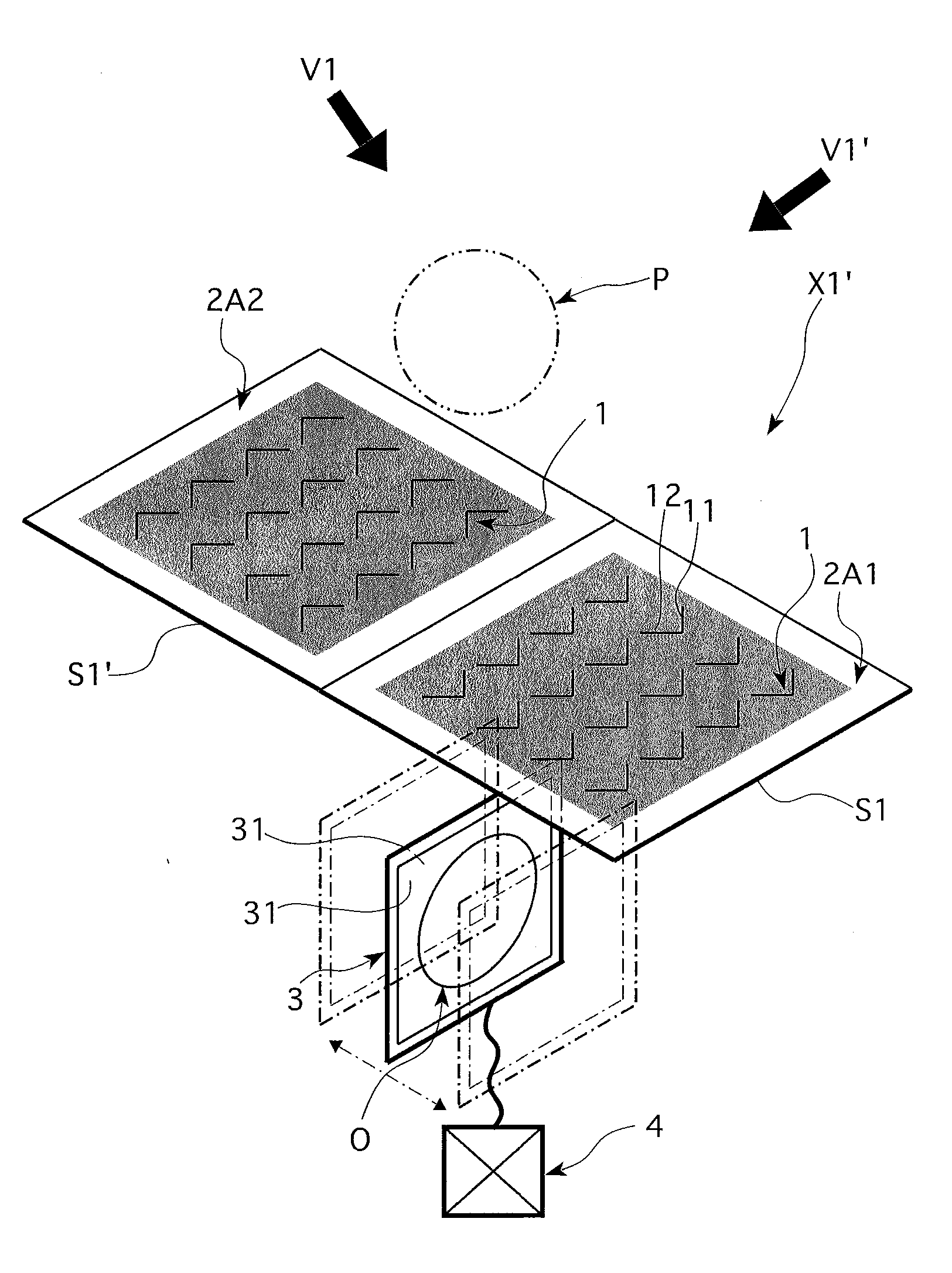Volume scanning three-dimensional floating image display device
a technology of image display device and volume scanning, which is applied in the direction of optics, instruments, electrical equipment, etc., can solve problems such as eye fatigu
- Summary
- Abstract
- Description
- Claims
- Application Information
AI Technical Summary
Benefits of technology
Problems solved by technology
Method used
Image
Examples
first embodiment
[0042]In the following, the first embodiment of the invention is described referring to FIGS. 1 through 7. The volume scanning three-dimensional floating image display X1 (in the following abbreviated as ‘three-dimensional floating image display device’) of the present embodiment is, as shown in FIG. 1, equipped with a real mirror image forming optical system 2 composed of a large number of dihedral corner reflectors 1 (in the following abbreviated as ‘dihedral corner reflector array’) as one type of a real mirror image forming optical system, and with a display 3 having a display surface 31 showing images, and further with an actuator means 4 capable of moving display 3 in a three-dimensional motion. In other words, the successively appearing images O on the display surface 31 of the moving display 3, will be the objects to be projected as real images of mirror images (real mirror images) by the dihedral corner reflector array 2A of the present embodiment, thus forming the origin f...
second embodiment
[0059]Next the second embodiment of the present invention is described referring to FIGS. 9 through 12. Pertaining to this embodiment, in the three-dimensional floating image display device X2 the real mirror image forming optical system is changed from the dihedral corner reflector array 2A used in the above-mentioned first embodiment to the real mirror image forming optical system 2B that is configured with a half-mirror 5 and a retroreflector array 6. The configuration of the display 3 and the actuator means 4 is similar to the case of the first embodiment. The real mirror image forming optical system 2B used in the present embodiment, as shown in FIG. 9, has the half-mirror surface 51 of the half-mirror 5 as the symmetry surface S2, and the images O shown in the display surface 31 of the display 3 located in the space under the half-mirror surface 51 will be reflected from the half-mirror surface 51, then returned in the incident direction by being recursively reflected from the...
third embodiment
[0067]Next the third embodiment of the present invention is described referring to FIGS. 13 and 14. Pertaining to this embodiment, the three-dimensional floating image display device X3 uses an afocal lens array 2C as the real mirror image forming optical system, while the configuration of the display 3 and the actuator means 4 is similar to the case of the first embodiment, which has arranged the display 3 parallel to the symmetry surface (see FIG. 7). This afocal lens array 2C is, as shown in FIG. 14, constructed by arranging a large number of afocal lenses 7 along an optical device plane S3. Specifically, the afocal lens 7 is constructed from two lenses 71 and 72 that share a common optical axis g that is perpendicular to the optical device plane S3, and are placed at the distance of their focal distances fs and fe. In this example, convex lenses are used for both lenses 71 and 72. That way, the incident light rays entering lens 71 from one side of the optical device plane S3 wil...
PUM
 Login to View More
Login to View More Abstract
Description
Claims
Application Information
 Login to View More
Login to View More - R&D
- Intellectual Property
- Life Sciences
- Materials
- Tech Scout
- Unparalleled Data Quality
- Higher Quality Content
- 60% Fewer Hallucinations
Browse by: Latest US Patents, China's latest patents, Technical Efficacy Thesaurus, Application Domain, Technology Topic, Popular Technical Reports.
© 2025 PatSnap. All rights reserved.Legal|Privacy policy|Modern Slavery Act Transparency Statement|Sitemap|About US| Contact US: help@patsnap.com



